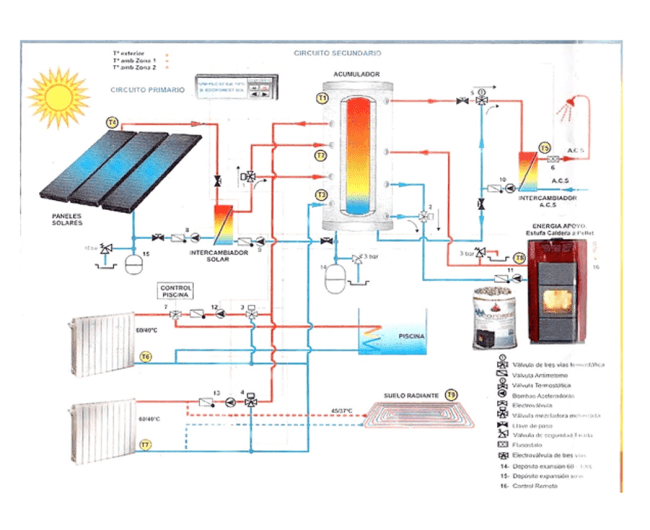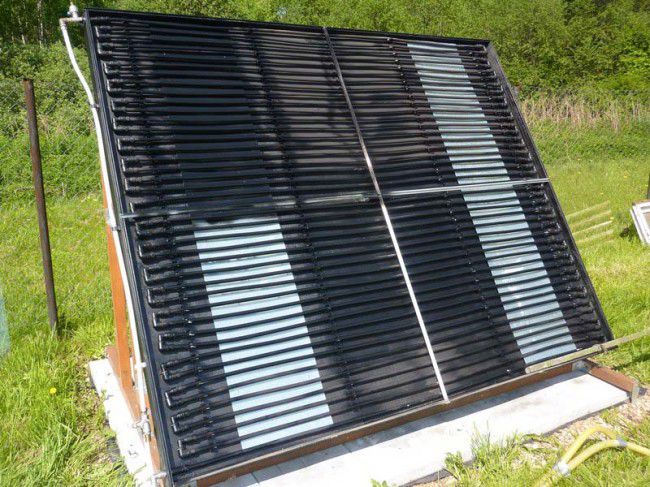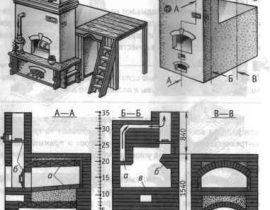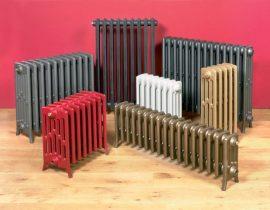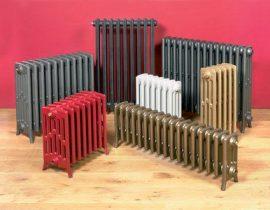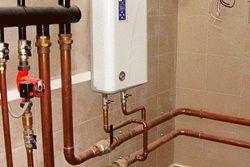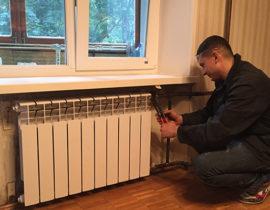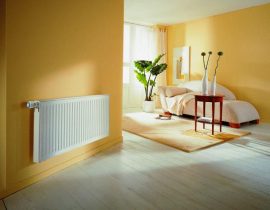Modern technologies have significantly expanded the possible ways to create autonomous heating systems for private and country houses.
If a century ago, almost all dwellings were heated by wood-burning stoves, then over the past time, main heating systems have been built in large cities, and the methods of heating rooms in private houses have increased significantly. A modern house can be heated using autonomous gas-fired systems, using efficient equipment that runs on various types of solid and liquid fuels. Recently, heating and energy systems operating on renewable energy sources have become increasingly popular. Solar panels are increasingly being used to heat private houses, but are they as good as sellers say about them? Let's look into this issue together, because the installation cost is not the smallest, and the payback period of a solar-powered heating system can exceed the service life of the elements of which it consists, which deprives it of any sense in placement, so what to do?
Content
- What are solar panels?
- What kind of assistance can be expected from the state when installing solar panels for heating a private house
- The device of autonomous systems on solar batteries
- Calculation of the energy efficiency of solar panels
- Varieties of solar heating collectors
- Advantages of solar systems and features of their design and installation
- Solar panels for home heating - video review
What are solar panels?
Solar panels are a high-tech device that converts the inexhaustible energy of the sun into electrical energy. Such devices have been widely used for several decades and successfully work in many household appliances, such as watches or calculators. Modern production has made it possible to make the manufacture of solar panels quite cheap, which has made it possible not only to power miniature devices from them, but also to create autonomous systems of relatively large sizes based on solar energy for heating country houses and providing them with a sustainable energy supply.
The benefits of solar panels
Despite the rather high starting cost of equipping a private house with a full-fledged package of solar panels, the total operating cost of such equipment is relatively low, since in the end the price per kilowatt-hour will consist only of the starting costs for the purchase and the price of the necessary maintenance work. Divided by the rather long service life of such equipment, the final price per kilowatt hour will drop rapidly.
What kind of assistance can be expected from the state when installing solar panels for heating a private house
If you are the owner of the private sector and you have a desire to reduce the cost of maintaining your home, in particular for heating, you can safely count on help from the state.Depending on the country in which you live, you may be offered some ways to offset your costs from the local or federal budget. You may receive assistance in the form of:
- partial compensation of costs for the installation of the system itself;
- the state, represented by the power grid maintenance authority, buys Green Energy from you at an inflated price.
We will tell you about the most profitable, the second option.
Its peculiarity lies in the fact that you are constantly trading electricity with the state back and forth. During daylight hours, when the sun is at its peak, your solar panels generate an increased amount of electricity, which is completely enough for your expenses, and you "give" the surplus back to the general power grid, in this case you act as a producer and seller of energy. At night, when your production is at zero, you buy energy back from the network for your needs: to heat your house, to heat water in a tap, for a washing machine, for lighting. This process is repeated day after day and at the end of the month you have either a positive or negative balance of Kilowatts on the meter, depending on the power of the solar panels that you have installed. If over the past month you have generated more kW/h than you have used up, the rest of the kW/h will be bought from you by the state for about 12 euro cents, this is the so-called “Green Tariff”. This money comes to your card and with its help you compensate for the costs that you incurred to install this system.Of course, in this case, you need a special meter that regulates who sells what to whom, but at the same time you save on batteries that were previously installed in such systems and required increased care at a huge cost! Now your "battery" is the city's power grid, which can buy you an infinite amount of electricity!
In any case, you need to contact the company that maintains and supplies electricity to your home for details. This is such a rapidly developing market that the conditions here can change several times a month!
The device of autonomous systems on solar batteries
But what to do when there is no sun in the sky, or it is covered with clouds?
First of all, it is worth providing backup power supplies. It can be either an ordinary electrical network or an autonomous generator capable of independently producing electrical energy. In addition, a reasonable solution would be to equip a private house with backup batteries, in which energy will be stored during low consumption. Such a system accumulates electricity during the day or during daylight hours and returns it to your home network at night or on cloudy days.
Calculation of the energy efficiency of solar panels
When calculating the required area of solar panels, it must be taken into account that one square meter of such equipment will give about 120 watts to your network. Now walk around your house and estimate how much power your household electrical appliances and equipment have. It would also be reasonable to estimate how much energy savings can be obtained by replacing some devices with energy efficient ones.After that, you can start calculating the required number and area of solar panels, trying to take into account the time of solar activity in your area.
Heating a private house from solar energy
In addition to generating electricity from solar energy, our luminary may well heat your home. Of course, you can use the simplest way and connect the electric heating system to solar panels. But most likely it will be rather inefficient, especially given the not very large number of sunny days per year at our latitudes.
It would be best to combine a system for generating electricity using solar panels and an autonomous heating system based on heating the liquid with solar heat, which then enters the heating radiators of your home.
How solar heating works
The heating collectors will be the key element of such an autonomous solar heating system. These are specialized devices that, with minimal losses, transfer solar radiant energy to a coolant, which can be water or special antifreeze.
An important advantage of such a high-tech approach is that such a system will work effectively even in the most severe climatic conditions, its efficiency does not decrease even at low negative outdoor temperatures.
Such systems, also called solar collectors, have proven themselves, for example, in the northern regions of China - in areas with a very harsh climate. Moreover, in those regions they are installed even in apartment buildings.
After heating in the collector, the coolant usually enters the storage tank, which is equipped with excellent thermal insulation. The temperature of the liquid in such a tank is maintained for quite a long time. If ordinary tap water is used as a heat carrier, then, in addition to heating, such a liquid can also be used for domestic purposes, for example, for washing or washing dishes.
Varieties of solar heating collectors
Currently, the following types of solar heating collectors are used:
- flat;
- vacuum.
They differ from each other in the device for transmitting the radiant energy of the Sun.
In a flat solar heating collector, a box filled with special adsorbing materials serves as a device for collecting such energy. Pipelines of the heat supply system are laid in the thickness of the material. The liquid circulating through them is heated by exposure to sunlight and then discharged into the heat accumulator tank.
In the vacuum heating manifold, instead of a flat box, a system of transparent tubes is used, from which air is pumped out. Inside the tubes there are pipelines of the heat supply system of various configurations. An interesting physical effect of such a device is that the sun's rays pass unhindered through the outer layer of glass and vacuum, and then heat the liquid in the pipelines. But the heat from the liquid in the pipelines no longer flows back, since the vacuum is an excellent heat insulator. All in all. Such a design in miniature resembles our planet: after all, we also have a heat insulator in the form of an interstellar vacuum, which, nevertheless, does not prevent the sun's rays from effectively heating the earth.
Advantages of solar systems and features of their design and installation
In order for a renewable energy system to become truly effective for your private home, a careful calculation must be carried out. First of all, the required level of energy consumption in the house is determined, the total power of all household appliances and their maximum load are calculated. Then the maximum possible efficiency of the solar panels intended for use and their area are calculated. It is possible that the required number of solar panels simply will not fit on the roof of your house and you will have to look for additional sources of energy or other areas for placement.
In any case, a solar-powered system should have a backup power source, which will allow you not to depend on the vagaries of the weather.
A similar approach should be applied in the design of solar heating systems. Manufacturers usually indicate the possibility solar heating collectors to work under certain temperature conditions. Do not neglect this information. And again - in case of a long winter and cloudy weather, your house should be equipped with an alternative source of heat supply - it can be any heating boiler of your choice, from a traditional Russian stone wood-burning stove, ending with newfangled electric boilers.
With the right combination of innovation in heating and a traditional, time-honored approach, you can enjoy the full benefits of solar energy, which is completely free to us.
Solar panels for home heating - video review
DIY solar panels for home heating - video


